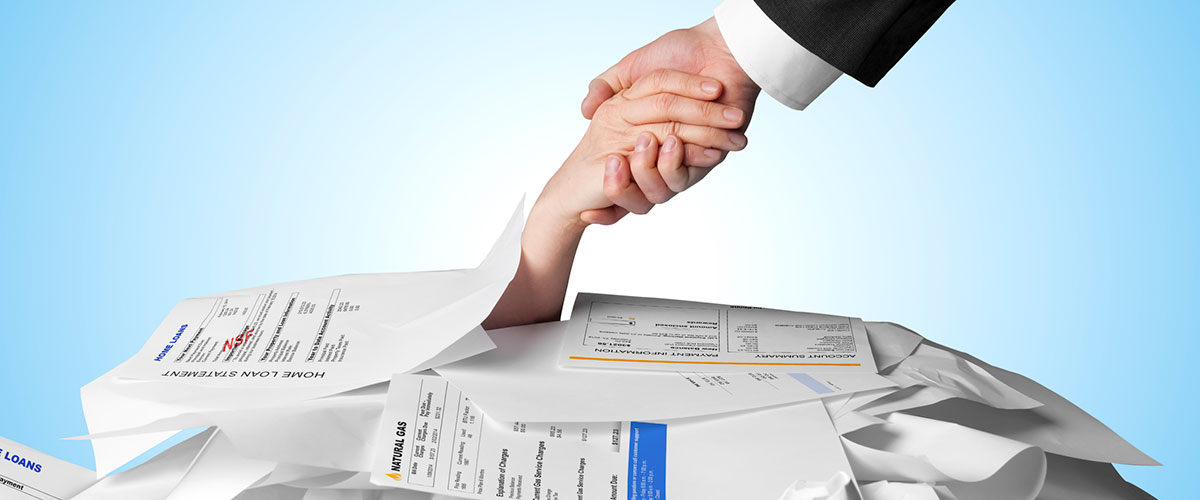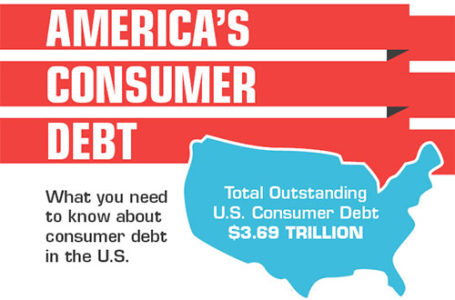Find the best solutions to eliminate your debt quickly, so you can save time, money, (and hopefully) your credit.
Challenges with debt have a way of taking over your life. You may be stressed and distracted at work, having fights at home and feeling exhausted as you second guess every financial choice you make. But don’t lose hope! There are solutions that can help you get out of debt quickly, so you can turn the page on your financial life and get a fresh start.
Where Americans stand with debt
If you’re struggling with debt problems, you’re not alone. The average American household owes more now than in 2009 at the start of the Great Recession. Student loans are now the second leading source of debt in the U.S. That’s vastly different from the financial landscape just a few decades ago.
So, what does consumer debt look like in the U.S. today?
As of June 2018, this is how consumer debt breaks down in the U.S. These are the average debts per household and total amounts nationwide:
| Type of debt | AVERAGE DEBT PER HOUSEHOLD | TOTAL U.S. CONSUMER BALANCE |
| Mortgages | $181,176 | $9 trillion |
| Student loans | $46,950 | $1.41 trillion |
| Auto loans | $27,669 | $1.24 trillion |
| Credit cards | $15,482 | $927 billion |
| Combined debt | $134,058 | $13.29 trillion |
In many cases, Americans have so much debt that it’s “unsustainable.” In other words, if you don’t find a way to get out of debt, you can be headed for significant credit damage, collections and bankruptcy.
The good news is that there are solutions that make eliminating debt faster and easier. Learning about your options is often the first key step to taking back control of your financial life.
Credit card debt
With average APR hovering between 16-18%, credit card debts can be extremely problematic. You can diligently make payments month after month, but your balances never seem to go down. Statistics show that most borrowers:
- have more than 3 credit cards
- are using more than 30% of their available credit limit (which is bad for your credit score)
- owe more than $10,000
When you owe that much to that many creditors, traditional payment methods just won’t work. These resources can help you understand your options for getting out of credit card debt and help you recognize when it’s time to get help:
- How to Get Out of Credit Card Debt
- How to Recognize a Credit Card Debt Problem
- How to Answer a Civil Summons for Credit Card Debt
- Credit Card Debt FAQ
Student loan debt
As much credit card debt as Americans have, they have even more challenges with student loans. The average student leaves school with over $37,000 in student loans to repay. There are 44.2 million Americans that have student loan debt, and the amount of debt has risen by 70% in the past five years alone.
- The average monthly student loan payment is $351
- 20% of grad students take out private loans to pay for school
- Almost half of student loan borrowers may default at some point in the next two years
And while there are plenty of relief options available for student loans, they aren’t always easy to navigate. A government study found that up to half federal student loan borrowers overpay, and another study found that 99% of student loan forgiveness applications get rejected, most often because the borrower failed to meet qualification requirements.
If you have student loans to repay, these resources can help you navigate this often-complicated process:
- How to Get Out of Student Loan Debt
- The Facts about Student Loan Debt Consolidation
- Understanding Federal Student Loan Relief Options
Tax debt
Owing back taxes to the IRS or state tax agencies creates tax debt that can be a serious drain your finances. Tax penalties can run as high as 25% of what you owe every month, making your debt grow quickly. And the IRS can aggressively pursue payment, through wage garnishment, levies and liens – all without a court order that most collections usually require.
These resources can help you understand your options for getting out of tax debt:
Debt collection
Once a debt is charged off and sent to a collection agency, it can create a whole new set of problems. Between constant harassing phone calls and damage to your credit, you need to understand how to deal with collectors the right way in order to minimize your financial stress.
These resources help you understand your rights when it comes to debt collection:


